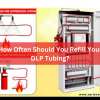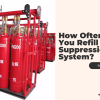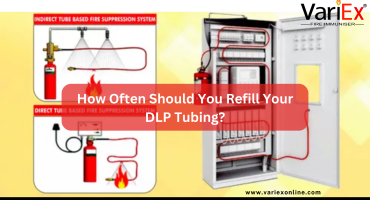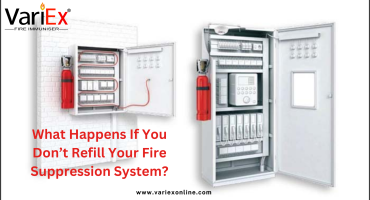![]()
Fire Immuniser
+91-7829629111
Email: info@variex.in
Varistor Technologies Pvt. Ltd.
Block-1, First Floor, Ardente Office One, Hoodi Circle, ITPL Main Road, Bengaluru, Karnataka 560048, IN
Top Signs Your Fire Suppression System Needs Refilling
Top Signs Your Fire Suppression System Needs Refilling
A fire suppression system is a crucial safety component in homes, businesses, and industrial facilities. However, simply installing a system is not enough; regular maintenance and timely refilling of suppression agents are essential to ensure optimal performance in case of a fire emergency.
Neglecting this can lead to system failure, resulting in costly damages, injuries, or even loss of life. But how do you know when your fire suppression system needs refilling? In this blog, we will discuss the top signs that indicate it’s time to refill your fire suppression system.
Why Regular Refilling is Essential
Fire suppression systems work by releasing fire-extinguishing agents, such as water, CO₂, or chemical foam, to douse flames. Over time, these agents may deplete due to accidental discharges, leaks, or scheduled use. If left unchecked, an empty or low suppression system can leave your property vulnerable to fire hazards.
Top Signs Your Fire Suppression System Needs Refilling
1. Low Pressure in the System
Fire suppression systems rely on sufficient pressure to distribute the fire suppressant effectively. A drop in pressure can indicate leakage, improper refilling, or malfunctioning components. You can check the pressure gauge to ensure it is within the recommended range.
2. Visible Leaks or Residue
If you notice any liquid residue, gas leaks, or chemical stains near the suppression system, it’s a clear sign that the agent has been discharged or leaked. Leaks can occur due to worn-out seals, damaged piping, or faulty nozzles.
3. Alarm Notifications or Fault Indicators
Modern fire suppression systems are equipped with alarm notifications that alert users of any faults, including low agent levels. If your system's control panel shows a warning light or an alarm, it’s time to inspect and refill your suppression system.
4. Accidental Discharges
Some suppression systems may get triggered accidentally due to false alarms or mechanical failures. If your system has been activated without a fire event, you must refill it immediately to maintain protection.
5. Corrosion or Rust on System Components
Rust and corrosion can weaken the fire suppression system, leading to leaks and pressure loss. Regular inspections can help detect corroded pipes or tanks that may require replacement or refilling.
6. Unusual Odor or Chemical Smell
A strong chemical odor, especially around suppression system storage units, could indicate leakage of the fire suppression agent. In some cases, gases like CO₂ or FM-200 may leak, reducing the available suppression material.
7. Expired Suppression Agent
Fire suppression agents have a shelf life. Over time, these agents degrade and lose their effectiveness. It is crucial to check the expiration date of the suppression materials and replace them as needed.
8. Changes in Weight of Storage Tanks
Suppression systems store extinguishing agents in tanks that have a specific weight. A sudden drop in weight suggests that some of the agent has leaked or been used, requiring a refill.
9. Reduced or Inconsistent Spray Pattern
If your system is not releasing the agent as expected, there may be blockages, pressure issues, or low suppressant levels. Regular testing can help identify if the spray pattern is inconsistent.
10. Professional Inspection Findings
Routine inspections by certified fire safety professionals often reveal low agent levels, system inefficiencies, or potential hazards. If an inspector recommends a refill, it is best to act immediately to avoid fire risks.
How to Refill Your Fire Suppression System
Refilling a fire suppression system should always be handled by a professional technician. The process involves:
- Inspecting the system for leaks, corrosion, and pressure loss.
- Draining the remaining suppression agent safely, if necessary.
- Refilling with the appropriate suppression agent based on manufacturer specifications.
- Testing the system to ensure proper functionality.
- Updating maintenance records for future inspections and compliance.
Best Practices for Maintaining a Fire Suppression System
To keep your fire suppression system in top condition, follow these best practices:
- Conduct Regular Inspections: Monthly visual checks and annual professional inspections are essential.
- Monitor Pressure Gauges: Ensure pressure levels remain stable.
- Address Leaks Immediately: Any sign of leakage should be reported and fixed without delay.
- Schedule Professional Maintenance: Fire safety professionals can detect issues that may go unnoticed.
- Replace Expired Agents: Always ensure that suppression materials are within their usable lifespan.
Comparison of Different Fire Suppression Agents
| Type of Fire Suppression Agent | Common Uses | Signs It Needs Refilling |
|---|---|---|
| CO₂ (Carbon Dioxide) | Electrical & Industrial Fires | Pressure loss, gas leakage, alarm indicators |
| FM-200 (Clean Agent) | Data Centers & Sensitive Equipment | Weight reduction, unusual odors, inspection alerts |
| Wet Chemical | Commercial Kitchens | Corrosion, accidental discharge, pressure drop |
| Dry Chemical (ABC, BC Powder) | General Fire Protection | Residue buildup, spray inconsistencies, expired agent |
| Water Mist | Hospitals, Museums | Low pressure, clogged nozzles, reduced spray pattern |
The Consequences of Not Refilling Your System
Failing to refill your fire suppression system can lead to:
- Increased Fire Risks: Without sufficient suppression agents, fires can spread uncontrollably.
- Property Damage: A non-functional system can lead to severe structural damage.
- Legal Penalties: Non-compliance with fire safety regulations may result in fines.
- Higher Insurance Costs: Insurers may increase premiums for poorly maintained systems.
- Potential Loss of Life: The most severe consequence is endangering human lives.
Conclusion
A well-maintained fire suppression system is a key part of any fire safety strategy. By recognizing the signs that your system needs refilling, you can take proactive steps to ensure its readiness in case of a fire emergency. Regular inspections, refills, and professional servicing will ensure your system operates effectively and keeps your property safe.
Frequently Asked Questions (FAQs)
1. How often should I refill my fire suppression system?
The frequency depends on the type of system and its usage. However, regular inspections and refills should be performed at least once a year.
2. What happens if I don’t refill my fire suppression system?
An empty or low system will fail to operate during a fire, leading to property damage, legal consequences, and safety hazards.
3. Can I refill my fire suppression system myself?
No. Fire suppression system refilling should always be done by a certified professional to ensure compliance and safety.
4. How do I check if my fire suppression system is running low?
Look for signs like low pressure, leaks, alarm indicators, and weight changes in storage tanks.
5. How much does it cost to refill a fire suppression system?
Costs vary based on the type of system and agent used. On average, refilling can range from $300 to $3,000 depending on the complexity of the system.
By staying vigilant and proactive, you can ensure your fire suppression system remains fully operational and ready to protect lives and property in an emergency.
Frequently Asked Questions
This is a sample text. You can click on it to edit it inline or open the element options to access additional options for this element.
This is a sample text. You can click on it to edit it inline or open the element options to access additional options for this element.
This is a sample text. You can click on it to edit it inline or open the element options to access additional options for this element.
This is a sample text. You can click on it to edit it inline or open the element options to access additional options for this element.
Final Say
At VariEx.in and VariexOnline.com, we specialize in supplying and installing top-quality fire fighting systems and equipment. From fire extinguishers to advanced suppression systems, we offer comprehensive solutions tailored to your needs. Our experienced team ensures precise installation and maintenance for optimal safety.
Trust VariEx for reliable fire protection. Contact us online or call 7829629111 to learn more.
We specialize in manufacturing, supplying, and distributing a comprehensive range of fire fighting equipment, including state-of-the-art fire extinguishers. Read our most searched blogs and find interesting information on topics such as how to use a fire extinguisher, how to calculate fire fighting water tank capacity, fire extinguisher refilling, obtaining a Fire NOC, understanding fire fighting systems, types of fire protection systems, the fire hydrant system, and the fire sprinkler system. These resources provide essential knowledge for ensuring safety and compliance with fire safety regulations. Additionally, you can explore guides on the maintenance of fire protection equipment, the latest advancements in fire safety technology, and best practices for fire risk assessment and management.
Our expertise extends to fire alarm systems, fire hydrant systems, and fire suppression systems, including fire sprinklers. Each product meets rigorous international standards for reliability and performance, ensuring effective fire safety products tailored to diverse applications and industries. Additionally, we are providing Fire Extinguisher Refilling and AMC services to ensure ongoing maintenance and operational readiness of fire safety equipment.
"WHAT YOU CAN READ NEXT"
 Read more +24 November 2023 in Fire Extinguisher
Read more +24 November 2023 in Fire ExtinguisherWhat types of fire extinguishers are available for different fire classes?
 Read more +11 April 2025 in Fire Suppression
Read more +11 April 2025 in Fire Suppression






